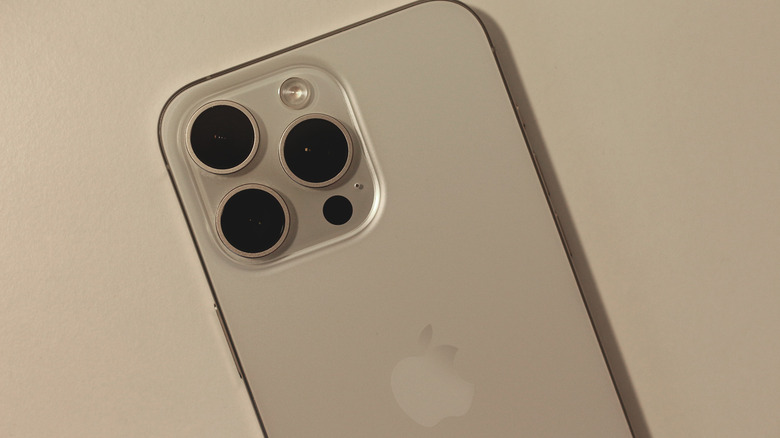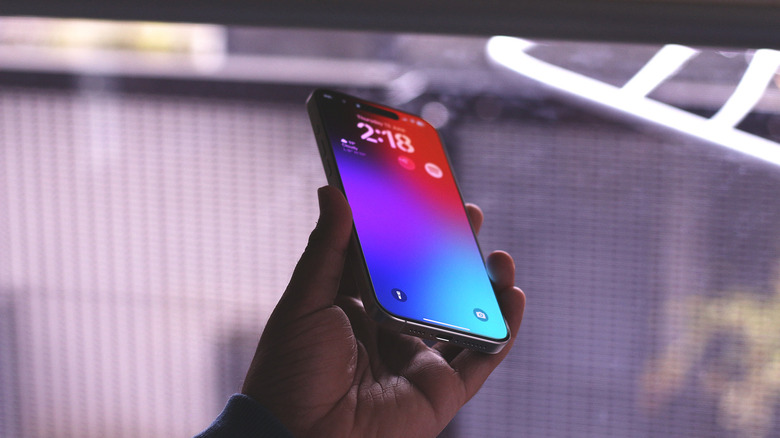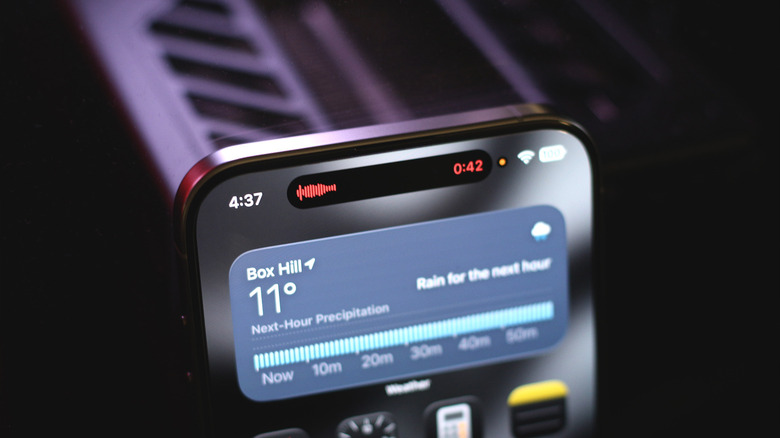What Is The Tiny Hole Next To The iPhone Camera Lenses For?
Comparing the latest from Apple to its first-ever iPhone from 2007 shows just how advanced smartphones have become, and yet, the evolution of the iPhone has mostly been smaller, incremental upgrades for the most part. If you're buying a modern iPhone today, you might not be as impressed by its risk-free feature set, especially compared to some Android contenders that push things to the extreme. However, you're signing up for a polished experience with great hardware that's instantly recognizable from a mile away.
The camera system on iPhones has always been one of the best in the industry. As we explored in our review of the iPhone 16 Pro, Apple continues to improve on the hardware and tweak image processing every year, pushing the envelope of smartphone optics. If you flip your iPhone around, you might notice one, two, or three lenses, depending on the model, accompanied by an LED flash, and a LiDAR sensor on the Pro models. Also housed around the camera array is a tiny hole — and no, this isn't a defect on your unit.
The tiny hole you see next to your iPhone's camera lenses is actually a microphone — one out of four on the device. The one located at the back is primarily used to capture directional audio more effectively during video recordings.
How many microphones does the iPhone have?
It's given that, in order to record audio, your phone needs a microphone, and nearly every modern smartphone comes with more than one. In fact, there have been four microphones present on every flagship model from Apple since the iPhone XS. There are two microphones located at the bottom, where your speaker grill is, and these are likely the ones used during phone calls, given their proximity to your mouth. There's another microphone housed right above the front camera on the iPhone, as well as an additional one at the rear, which we've mentioned.
Apple introduced a new system of "studio-quality mics" with the iPhone 16 series, allowing you to record Spatial Audio – a more immersive way to capture sound coming from multiple directions. This array of microphones also introduced the Audio Mix feature, which users can use to tinker around with the multiple sound sources in a recording. Pair this with the already-excellent noise suppression on iPhones, and you might no longer need to rely on external microphones to capture semi-professional video clips.
Troubleshooting poor recording quality on iPhone
A suite of four studio-quality microphones is nice to have, but what's the point if your calls or video recordings have poor audio quality? If you can still record audio using your iPhone but of undesirable quality, then check for any visible dust or debris that may have lodged in or around any of the four microphone holes. If you are using a screen protector that doesn't seem perfectly aligned, it may be blocking the microphone located at the top.
The same goes for cases that don't have proper cutouts at the bottom and the back. Try removing your screen protector and case, and cleaning your phone's chassis to see if this helps improve the quality of your audio recordings. In case your iPhone is completely unable to record any kind of audio in specific apps, it's possible that the required permissions haven't been granted. To check for and enable microphone access for individual apps, follow these steps:
- On your iPhone, launch the Settings app.
- Navigate to the Apps sub-menu and select the app that has been giving you trouble.
- Tap to enable the "Microphone" permission.
Reviewing app permissions is one of the best iPhone security features you can mess around with to find the right balance. If, despite all the troubleshooting, your iPhone still struggles to capture decent audio recordings, it's advisable to book an appointment with Apple Support.


